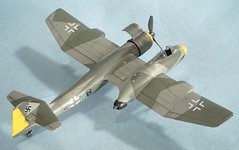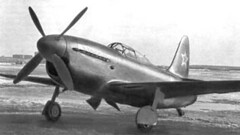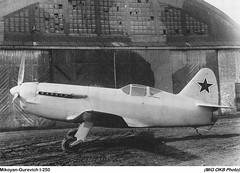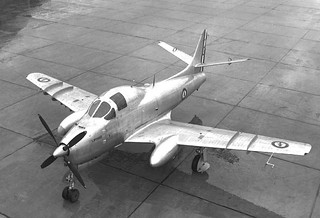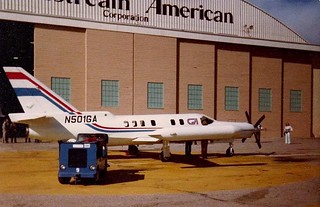Moving this older post back to the top of the blog with a fresh update about another mixed-power aircraft I missed the first time around: the Navy’s North American AJ Savage.
— Paul
Props and jets on the same aircraft, that is. Last year, when I visited the Planes of Fame Museum in Chino, California, I discovered a US Navy Ryan FR Fireball tucked away in a hangar. I knew there had a been a few mixed-power fighters in the early years of the jet age, but this was the first one I’d seen with my own eyes.
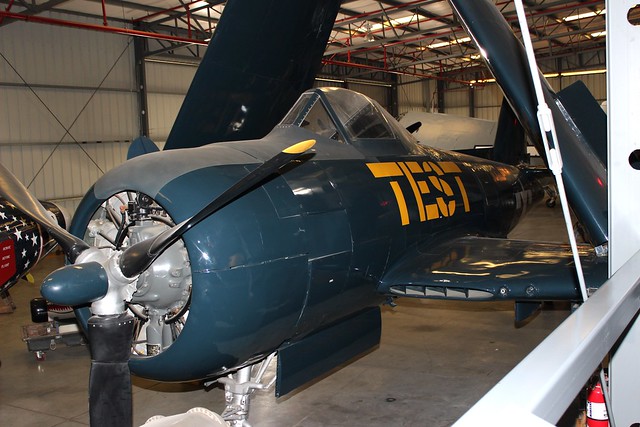
By “mixed-power” aircraft I mean aircraft designed to fly with a combination of prop and jet power, not the military prop-powered patrol, cargo, bomber, and tanker aircraft of the Korean War era to which supplementary jet engines were later added, aircraft like the US Navy P2 Neptune or the US Air Force C-119, B-36, KB-50, and KC-97. The aircraft I’ll describe here were designed from the ground up to fly with both piston (or turboprop) and jet engines.
Back to the Ryan FR Fireball, which was powered by a Wright Cyclone radial piston engine in the nose and a General Electric turbojet in the tail (in the above photo you can see the jet intake in the wing root). When Ryan began developing this aircraft during WWII, jet engines suffered from sluggish acceleration and US Navy leadership didn’t consider them safe for carrier operations. Adding a jet engine to a prop fighter, however, would increase its speed and ceiling, so at the time mixed power made sense.
The Fireball, first flown in June 1944, is one of only two mixed-power aircraft produced in numbers and put into operational service. All told, Ryan built 71; 66 entered operational service in 1945, the last year of WWII, although they did not see combat. The Fireball was flown by a single carrier-based squadron, VF-66 (later redesignated VF-41 and then VF-1E) from 1945 to 1947, when it was retired from service.
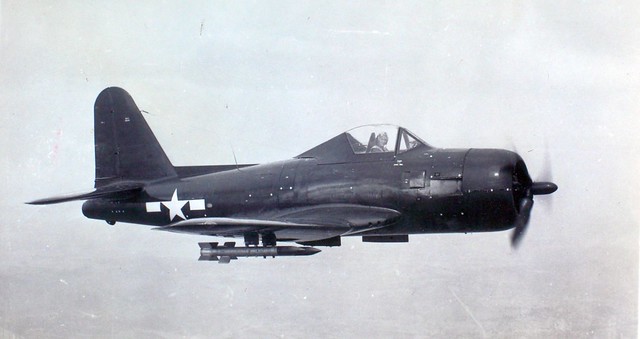
Another mixed-power fighter, designed for the Navy but never put into service, was the Curtiss XF15C. This aircraft, powered by a Pratt & Whitney radial in the nose and an Allis-Chalmers turbojet in the belly, never made it past the prototype stage. Its first flight was in February 1945, but by October 1946 the Navy was ready to proceed with pure jet-powered fighters like McDonnell’s FH Phantom and F2H Banshee, and the Curtiss contract was cancelled after only three prototypes had been built.

After producing the Fireball, Ryan Aeronautical proposed a more advanced version, the XF2R Dark Shark. This fighter was powered by a General Electric turboprop in the nose and a GE turbojet in the tail. The prototype flew in November 1946, and although the turboprop/turbojet combination gave it greater speed and a higher ceiling than the Fireball, the Navy as previously noted was moving on to pure jet-powered fighters and only one Dark Shark was built.
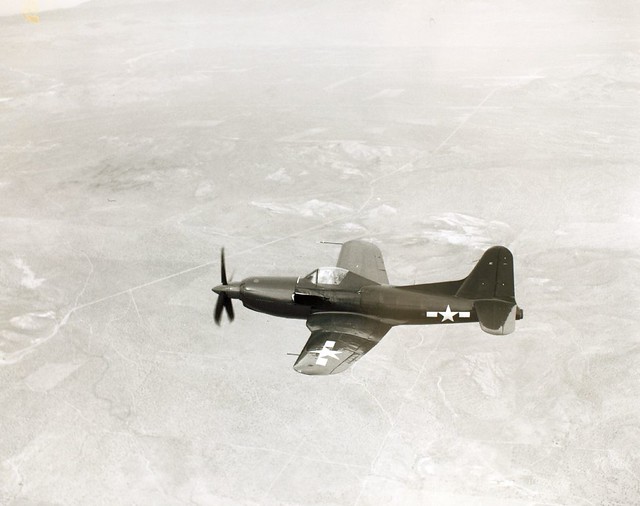
The second production mixed-power aircraft to see operational service was the US Navy’s Martin P4M Mercator, a long-range land-based electronic reconnaissance aircraft. The Mercator, first flown in October 1946, was powered by two Pratt & Whitney Wasp Major radials and two Allison turbojets built into the rear of the engine nacelles. The jet engines were used for takeoff and also to increase dash speed in combat, and, as with the jet in Ryan’s Fireball, ran on the same aviation fuel used by the piston engines. Between 1950 and 1960, at least 18 Mercators equipped two fleet air reconnaissance squadrons, flying classified night electronic signals intelligence missions near or over Vietnam, China, North Korea, and the eastern Soviet Union. At least three Mercators were attacked by enemy air forces, two shot down with the loss of all crew members.
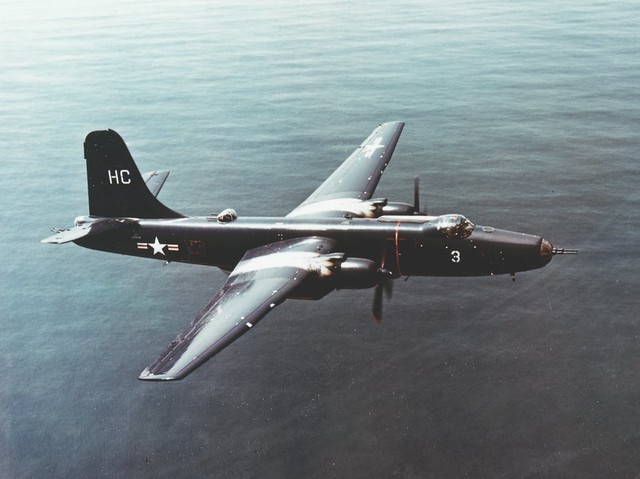
The Navy was not alone in experimenting with mixed-power aircraft. From the late 1940s and into the 1950s, the US Air Force was also in the game.
The USAF’s first was the Consolidated Vultee XP-81 (later known as the Convair XF-81), a proposed long-range escort fighter powered by a General Electric turboprop and turbojet. First flown in February 1945 with a Merlin engine in place of the turboprop (which was not yet ready for testing), it was later refitted with the turboprop and tested along with a second prototype. The turboprop was a disappointment, producing not much more power than the piston Merlin. Moreover, the capture of Guam and Saipan removed the need for long-range fighters to escort American bombers on missions to Japan, and although the two prototypes continued to be tested past the end of the war, the USAF no longer had plans to put the airplane into production. The XF-81s ended their days in 1947 as targets on a bombing range.
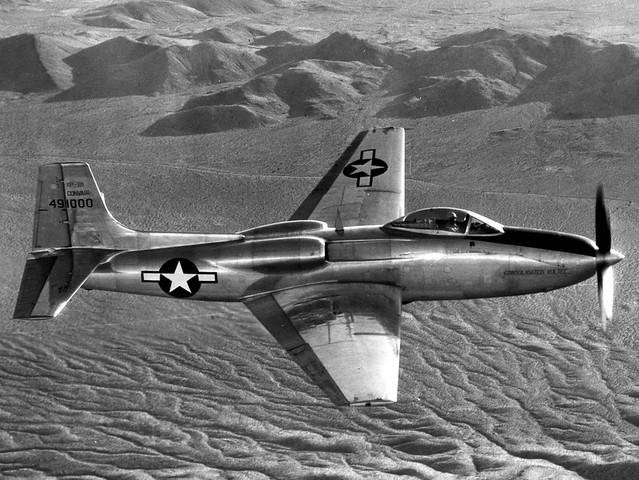
The USAF tested another turboprop/jet combination fighter in the mid-1950s, not because it still wanted a mixed-power fighter, but because it was interested in a high-speed propeller, one that could power turboprop aircraft to speeds in the Mach 0.9 range while using less fuel than a conventional turbojet engine.
This aircraft was McDonnell’s XF-88B, a modified version of McDonnell’s experimental XF-88 Voodoo, powered by two afterburning Westinghouse turbojets and one nose-mounted Allison turboprop outfitted with an experimental 4-bladed prop (and later a shorter 3-bladed prop). During testing, conducted between 1953 and 1958, one of the two XF-88Bs achieved supersonic flight, although reading between the lines of test reports, it did so with the thrust of its afterburning jet engines, not the prop (which was likely feathered).
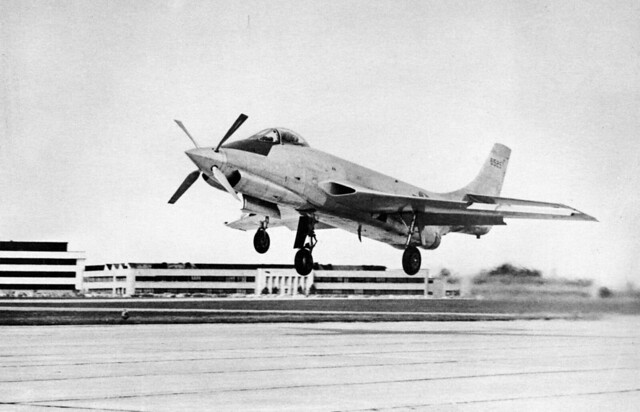
As an aside, the USAF and Republic Aircraft conducted follow-on testing of the high-speed prop concept on an experimental fighter nicknamed the Thunderscreech. The Republic XF-84H, which was not a mixed-power design, was a modified version of the F-84F Thunderstreak powered by a single large turboprop engine mounted aft of the cockpit, connected to the nose-mounted propeller by a long driveshaft. The two test aircraft successfully proved their capability to generate noise, but were otherwise failures. Testing started in 1955, but by 1956 the USAF realized the future of economical high-speed flight lay in improved turbojet design and the development of turbofan engines, and the project was terminated.
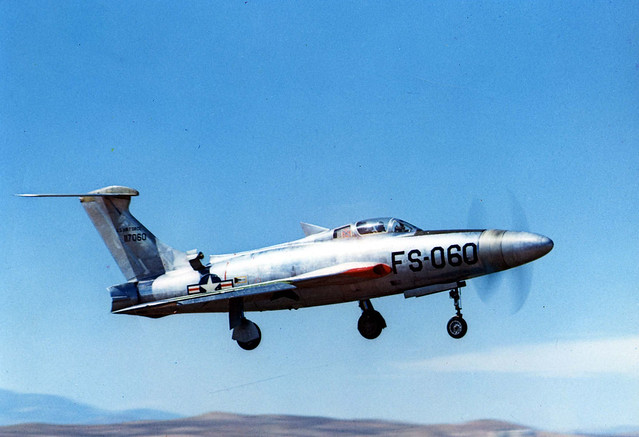
The US was not the only nation to experiment with mixed-power aircraft. Germany arguably designed the first, although no flying prototype was ever built. This was the Blohm & Voss P.194, a tactical bomber proposed to the Luftwaffe in February 1944. The piston engine was to be mounted in the nose of an offset fuselage, with the crew compartment and a turbojet engine in a separate offset nacelle. The Luftwaffe decided on the pure-jet Me-262 instead, and the Blohm & Voss P.194 was consigned to “Nazi Secret Weapons of WWII” websites and forums.
The Russians designed and flew mixed-power fighters during WWII, though they were never operational and did not see combat. The first was the Sukhoi Su-5; the second was the Mikoyan-Gurevich I-250. The lone prototype Su-5 flew in April 1945. Twelve I-250s were built and tested, but never put into service. Interestingly, the jet engines in both Russian designs were “motorjets,” rudimentary jet engines with compressors driven by the Klimov V-12s up front.
In 1951 the French Navy tested a prototype mixed-power carrier-based attack aircraft, the Breguet Vultur, a hybrid powered by turboprop and turbojet engines. Testing of the Vultur led to development and fielding of the Breguet Alizé, the carrier-based anti-submarine warfare aircraft operated by France and other countries from the late 1950s to 2000. The Alizé, unlike the Vultur, was not a mixed-power aircraft, and was driven by a single Rolls-Royce turboprop engine.
There’s just one more I’m aware of, and it is the only civil aircraft in this category. It’s another American, a hybrid turboprop/turbofan-powered executive transport called the Gulfstream American Hustler, developed in 1978. Only a single prototype was built and flown, going through several design and powerplant reconfigurations until the project was abandoned with the onset of an early-1980s recession in the general aviation market.
“One turning and one burning.” I wonder if any of the test pilots who flew these mixed-power aircraft ever uttered those words. I sincerely hope so!
Update (3/31/17): Missed one! The Douglas XBTD-2 Destroyer, a mixed-power (piston/turbojet) variant of the production BTD-1 torpedo/dive bomber. Prototype only, two built, first flown in May 1944 (pre-dating the Ryan FR Fireball by one month). The downward slant of the jet tailpipe negated the jet engine’s ability to increase aircraft speed, and the project was discontinued in 1945. Sorry, this is the only photo I can find:
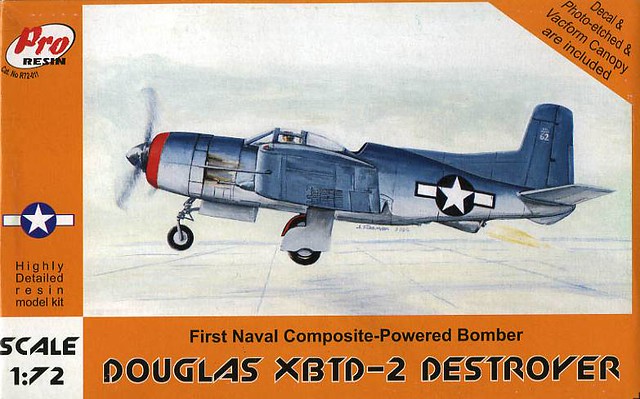
Update (8/20/20): Holy cow, here’s another, an operational Navy aircraft at that! The North American AJ Savage (later A-2 Savage) was a carrier-based medium bomber designed shortly after World War II to carry atomic bombs. It was the Navy’s heaviest carrier aircraft at the time. It was powered by two piston engines and a turbojet located in the rear fuselage. Versions of the Savage were operational from 1950 to 1957 as bombers, reconnaissance aircraft, and later in its career as an aerial refueling tanker.

